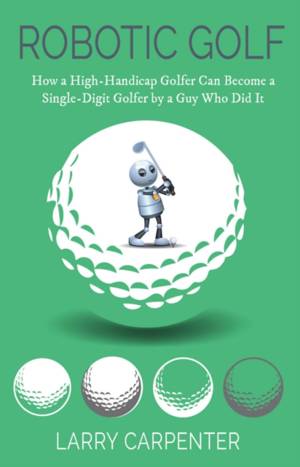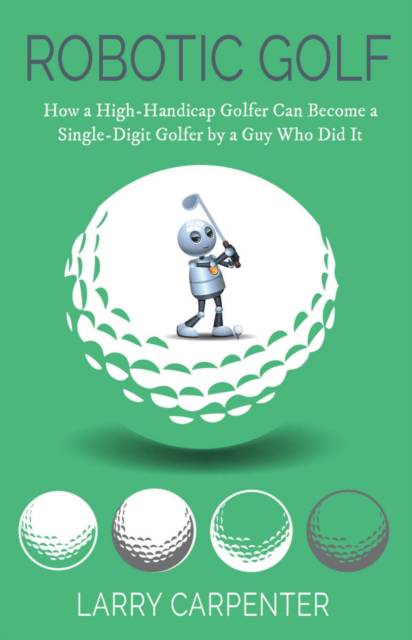
- Afhalen na 1 uur in een winkel met voorraad
- Gratis thuislevering in België vanaf € 30
- Ruim aanbod met 7 miljoen producten
- Afhalen na 1 uur in een winkel met voorraad
- Gratis thuislevering in België vanaf € 30
- Ruim aanbod met 7 miljoen producten
Zoeken
Robotic Golf
How a High-Handicap Golfer Can Become a Single-Digit Golfer by a Guy Who Did It
Larry Carpenter
Paperback | Engels
€ 14,95
+ 29 punten
Omschrijving
For years, amateur golfers have been going to see pros to learn how to improve their game. If there were some major technical difficulties that the pro could correct, the amateurs would come away with an improved game. For most of us, we might see an improvement or two under the watchful eye of the pro, but when we returned to the course, our bad golf game simply returned. Even if we remembered the technical changes, we simply could not hit the ball on the sweet spot time after time like the pros. There is a very simple explanation as to why this is the case-the golf pro has good hand-eye coordination, and you don't. Most of us are not blessed with great hand-eye coordination like the pure ball strikers that you see on the television each weekend. Does this mean that you are doomed to forever be relegated to the land of the high handicap? For years, author Larry Carpenter thought that was the case, but when he realized what the basic problem was, he was able to develop alternative techniques that helped him improve his game. Using these techniques, he was able to take his handicap from the high twenties down to single digits. In this book, Larry Carpenter shares with you the techniques that he adopted to compensate for not having the incredible hand-eye coordination that single-digit golfers normally possess. When they say don't be mechanical and play by feel, you simply have to realize that if you try to hit the ball by feel, you're going to whiff it. And you are going to be continually frustrated by your high handicap. The techniques in this book are based upon mechanical principles, best exemplified by the equipment testing robot, Iron Byron, that enable the less blessed golfer to compensate for their lack of hand-eye coordination and stand a much better chance of making solid contact with the ball every swing.
Specificaties
Betrokkenen
- Auteur(s):
- Uitgeverij:
Inhoud
- Aantal bladzijden:
- 176
- Taal:
- Engels
Eigenschappen
- Productcode (EAN):
- 9781954437289
- Verschijningsdatum:
- 4/01/2022
- Uitvoering:
- Paperback
- Formaat:
- Trade paperback (VS)
- Afmetingen:
- 138 mm x 214 mm
- Gewicht:
- 249 g

Alleen bij Standaard Boekhandel
+ 29 punten op je klantenkaart van Standaard Boekhandel
Beoordelingen
We publiceren alleen reviews die voldoen aan de voorwaarden voor reviews. Bekijk onze voorwaarden voor reviews.











